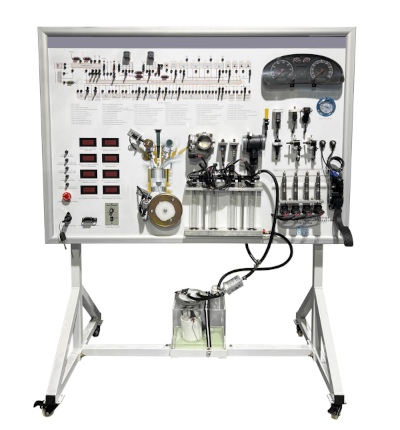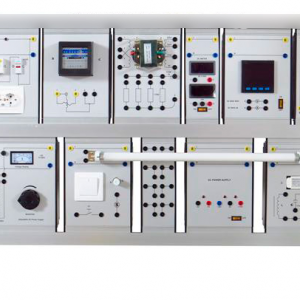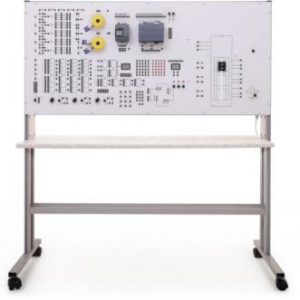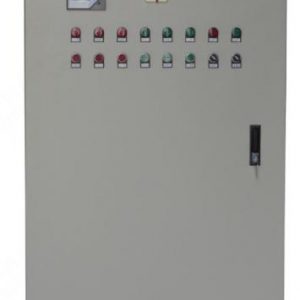
Laboratory Stand “Electrical Devices”
January 8, 2025
Laboratory Stand “Hydraulic Brake System with ABS”
January 12, 2025Laboratory Stand “FSI Injection System”
$12,890.00
This stand provides hands-on experience with the Fuel Stratified Injection (FSI) system used in modern vehicles. It allows users to study the components and operation of direct fuel injection technology.
FSI Injection System Training Stand
The stand is a panel that displays the structural diagram of the FSI injection system, system sensors, actuators, dashboard, engine control units, and nitrogen oxide control systems. There is also an OBD2 diagnostic connector on the panel for computer diagnostics of the engine management system. The panel includes sockets for connecting an oscilloscope to record signals from the sensors. A set of methodical and technical documentation intended for the teaching staff is attached to the stand.
List of Performed Works:
- Engine start mode
- Determination of engine load
- Study of the operation of the pressure sensor in the line to the vacuum brake booster G294
- Control of the engine by the amount of torque
- Engine operation with stratified charge formation
- Engine operation on a lean homogeneous mixture
- Engine operation on a homogeneous mixture of stoichiometric composition
Technical Characteristics:
- Power Supply: Single-phase 220 V, 50 Hz
- Power Consumption: Not more than 350 W
1. Product Introduction
The comprehensive training platform for sensors and actuators of the automobile FSI injection system uses real components from automotive sensor and actuator systems to fully demonstrate their structure and working processes. This platform is suitable for teaching the theory and maintenance training of automobile systems in schools.
2. Functional Characteristics
- Real Engine Components: Utilizes complete engine sensors and actuator components. The crankshaft sensor signal wheel is used to simulate engine operation. After connecting the experimental plug-in wires, the working processes of engine sensors, control units, and actuators can be truly demonstrated (e.g., spark plug ignition, injector injection, fuel pump operation).
- Comprehensive Equipment Installation: Includes the original car engine control unit, combination instrument, fuel tank, fuel pump, fuel pump relay, fuse box, four fuel injectors, fuel injection guide, fuel injection measuring cup, movable stand, and multiple sensors and actuators.
- Educational Visuals: Features a color spray-painted circuit diagram on the teaching board panel. Students can intuitively compare the circuit diagram to connect sensors and actuators, understanding and analyzing the working principles of automobile sensors and actuator systems.
- Diagnostic Capability: Equipped with a fuel tank, fuel quantity sensor, engine control unit, combination instrument, oil pump relay, ignition switch, diagnostic socket, fuse box, fuel injector, and measuring cup. The panel has detection terminals to directly detect electrical signals of the circuit components of the engine control system.
- Direct Sensor Connection: The sensor side of the equipment panel is equipped with detection terminals, allowing direct connection of sensors and actuators.
- Simulated Signals: The simulated crankshaft position sensor signal can activate the fuel pump, make the fuel injector spray, and ignite the spark plug.
- Diagnostic Socket: Can connect to a special or universal car decoder to perform self-diagnosis functions such as ECU code query, fault code reading, fault code clearing, data flow reading, actuator testing, parameter setting, waveform analysis, etc., on the engine control unit.
- Robust Construction: The panel part of the equipment adopts a 1.5 mm cold plate stamping structure with a pleasing appearance. The chassis part uses steel structure welding, and the surface is sprayed with a self-locking caster device. The teaching board base is equipped with a desktop of about 40 cm, convenient for placing materials, light detection instruments, etc.
- Mobility: The equipment chassis uses steel structure welding with a baking paint surface treatment and self-locking casters, making it flexible to move.
- Efficient Power Usage: Uses ordinary 220V AC power supply, converted into 12V DC through internal circuit transformation and rectification. No battery is required, reducing charging troubles. The 12V DC power supply has an anti-short circuit function.
3. Technical Specifications
- External Power Supply: AC 220V ±10%, 50Hz
- Working Voltage: DC 12V
- Working Temperature: -40°C to +50°C
- Fuel Pressure Gauge: 0 to 10 kg/psi
- Steel Pipe: 40 × 40 × 3 mm
- Cabinet: 1.5 mm cold plate stamping
- Mobile Casters: 100 × 60 mm




